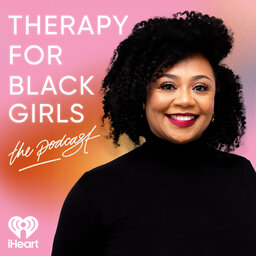Session 340: Starting to Sew
There are an endless amount of studies that show how hobbies can be beneficial to our mental health and wellness. However, it can be understandably difficult to choose what hobby to take on, or even know where to start. If this sounds like you, then don’t fret, because in this first part of our January Jumpstart mini-series, we’re highlighting sewing and breaking down everything you need to know in order to make it your new year hobby.
Joining us for this conversation is Lisa Woolfork, a scholar, sewist, community organizer, and podcaster. She is the founder of Black Women Stitch, the sewing group where Black Lives Matter. She is also the host and producer of Stitch Please, a weekly audio podcast that centers Black women, girls, and femmes in sewing. Lisa and I chatted about the supplies you should invest in as a beginner sewist, how you can make time for sewing in your busy life, and how sewing can teach you lessons in self-compassion and forgiveness.
About the Podcast
The Therapy for Black Girls Podcast is a weekly conversation with Dr. Joy Harden Bradford, a licensed Psychologist in Atlanta, Georgia, about all things mental health, personal development, and all the small decisions we can make to become the best possible versions of ourselves.
Resources & Announcements
Visit our Amazon Store for all the books mentioned on the podcast.
Grab your copy of Sisterhood Heals.
Where to Find Lisa
Stay Connected
Is there a topic you'd like covered on the podcast? Submit it at therapyforblackgirls.com/mailbox.
If you're looking for a therapist in your area, check out the directory at https://www.therapyforblackgirls.com/directory.
Take the info from the podcast to the next level by joining us in the Therapy for Black Girls Sister Circle community.therapyforblackgirls.com
Grab your copy of our guided affirmation and other TBG Merch at therapyforblackgirls.com/shop.
The hashtag for the podcast is #TBGinSession.
Make sure to follow us on social media:
Twitter: @therapy4bgirls
Instagram: @therapyforblackgirls
Facebook: @therapyforblackgirls
Our Production Team
Executive Producers: Dennison Bradford & Maya Cole Howard
Producers: Fredia Lucas & Ellice Ellis
Production Intern: Zariah Taylor
 Therapy for Black Girls
Therapy for Black Girls


